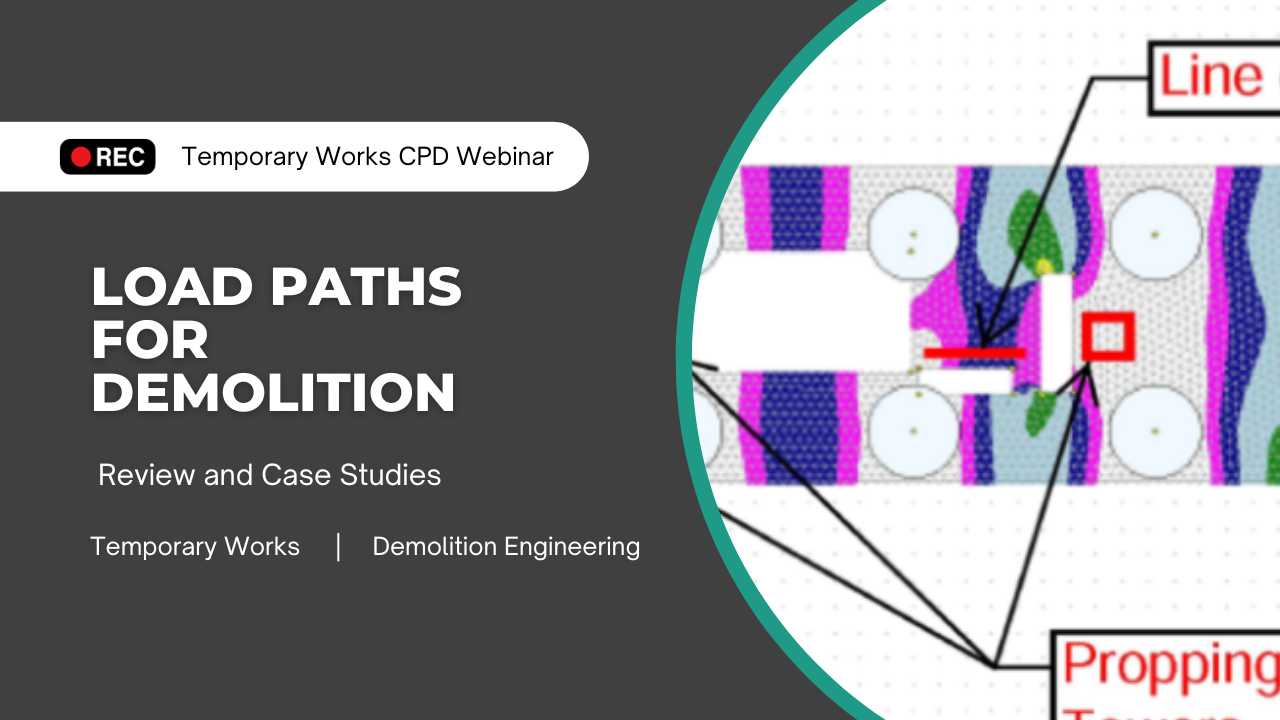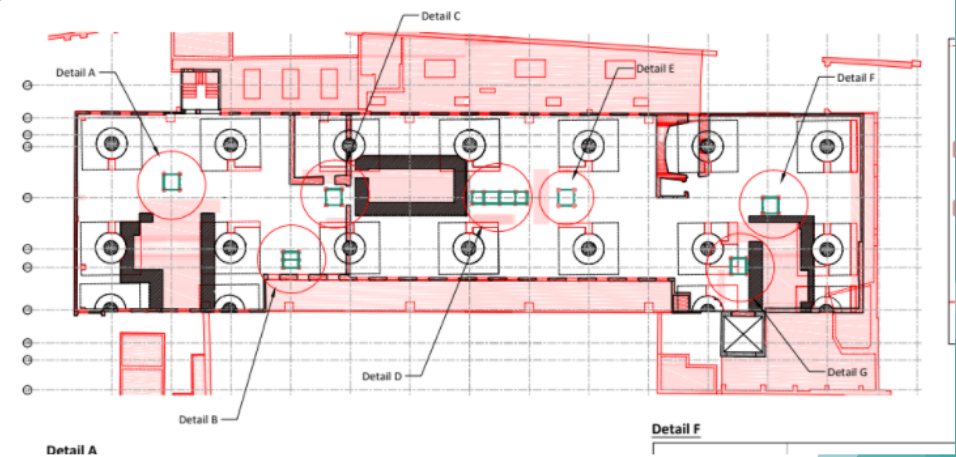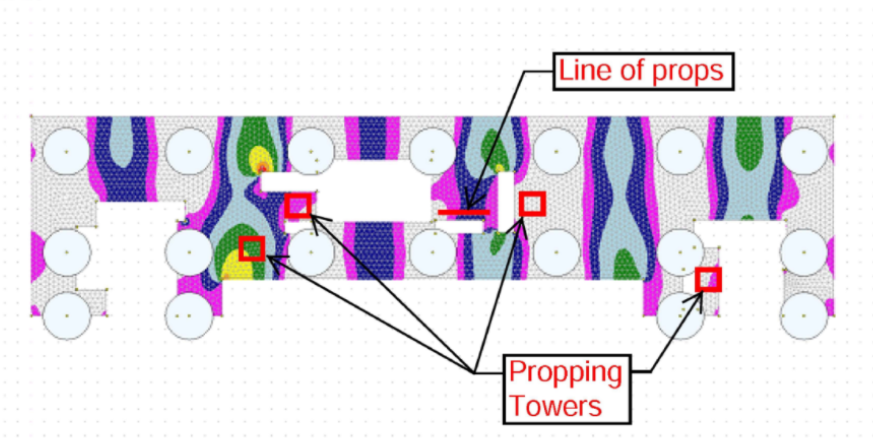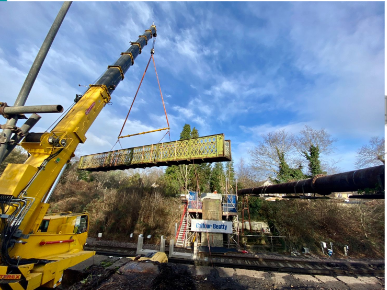
An overview of load paths and how they change during demolition and temporary works projects.
Load Path Webinar Topics
- Definition of load paths – the routes forces take through a structure to the foundations
- Case study: Altering a tower structure and maintaining stability by redirecting loads
- Example of bridge lift: Reversed loading and changed material capacities
- Key principles: Understand the structure, demolition sequence, and resulting load path changes
- Applying engineering knowledge to design appropriate temporary works
Key Takeaways
- Load paths are crucial to understand for demolition and temporary works projects. Analysing how load paths change is vital.
- Always examine the original load path and how proposed works will alter it.
- Temporary propping and supports may be required to maintain stability if loads are redistributed.
- Reversed or altered loading can change material capacities, so check under new conditions.
- Analyse the structure and demolition/construction sequence to see load path changes.
- Apply fundamental engineering principles to devise appropriate temporary works schemes.
- Safety and stability rely on engineering analysis of the evolving load paths during works.
- Understanding load path changes allows civil and structural engineers to design safe demolitions and temporary works.
The key is rigorously analysing load paths at each stage using engineering knowledge and experience.
Load Path Case Studies
The webinar featured two case studies that demonstrate how load paths can change significantly during demolition and temporary works and the analyses required to maintain structural stability.
Gramophone Works – Altering and Demolishing a Tower Structure:
- Project involving altering an existing tower structure by adding a new lift and underpinning the foundations.
- The original straight load path down through the tower was disrupted by the works.
- Design of a complex propping scheme to redistribute loads into temporary beams, columns and piles so the tower remained stable during excavation works

 Church Monks Footbridge – Bridge Lift for Refurbishment:
Church Monks Footbridge – Bridge Lift for Refurbishment:
- This case study involves lifting up an existing bridge to enable refurbishment works.
- Lifting the bridge reversed the load path, inducing hogging moment at the top and compression at the bottom.
- They had to analyze the material capacities under reverse loading conditions.
 This webinar demonstrates how civil and structural engineers analyze load paths and account for changes during construction and demolition works. Understanding the load path is vital for stability of temporary structures. Insightful examples of real projects show how load redistribution applies in practice.
This webinar demonstrates how civil and structural engineers analyze load paths and account for changes during construction and demolition works. Understanding the load path is vital for stability of temporary structures. Insightful examples of real projects show how load redistribution applies in practice.
Additional Resource – Building Research Establishment (BRE) (Good Building Guides)

